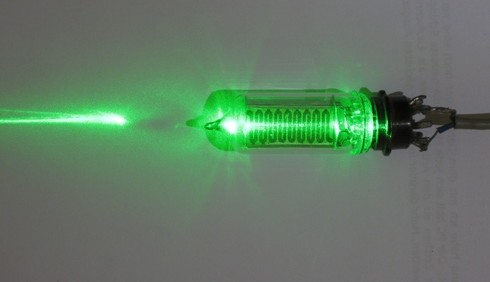The Thermionic laser
on

During a clearout at the IBM labs where much of the research work for the semiconductor laser was conducted a team of scientists unearthed a rare example of the semiconductors laser’s predecessor, the thermionic laser. Imagine their surprise when they connected it up to a 2 kV supply to find that it still functioned. Dr Flip Raloo commented “with valves this old leakage can be a problem, but as you can see it still functions perfectly”. The laser is an example of the early Crystal Detector Pumped Thermionic Laser (CDPTL) using a galena (lead sulfide) crystal as a point contact rectifier.
The tube produces light with a wavelength 808 nm at 3 W. Like its semiconductor counterpart the green laser beam generated by the thermionic laser is visible at night because of Rayleigh scattering from air molecules. This makes them popular amongst astronomers for indicating the positions of stars and galaxies.
Dr Raloo explained that research was conducted to test their suitability for airborne munitions guidance but vibrations from the piston engines used at the time made them unreliable and there were some incidents recorded where the fabric wing coverings used on the aircraft spontaneously combusted when the bomb aimer was careless pointing the laser.


Discussion (0 comments)